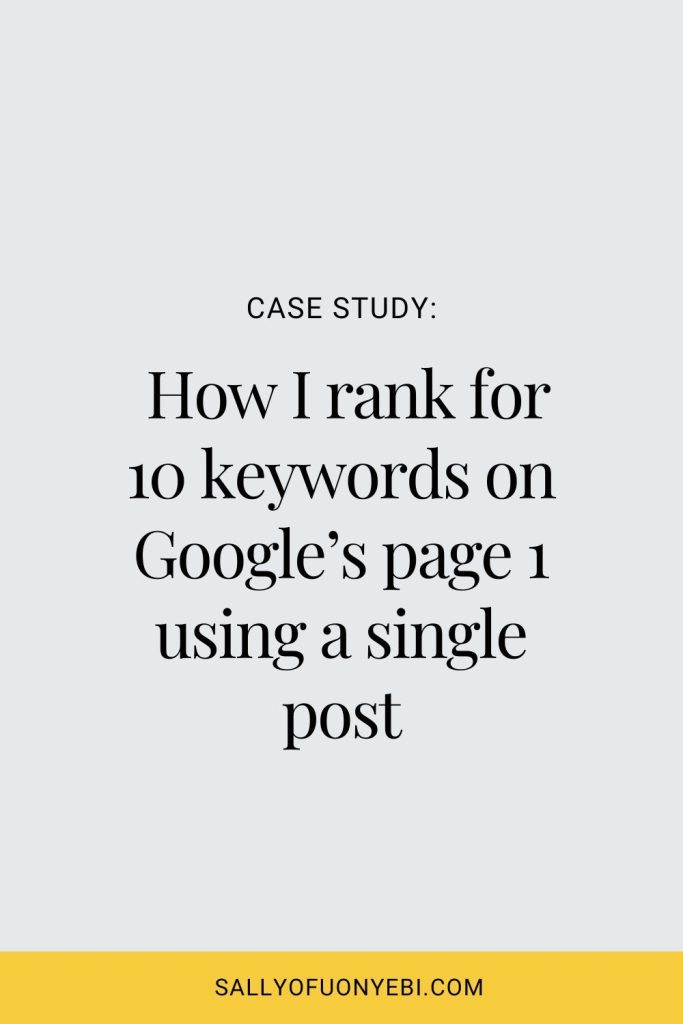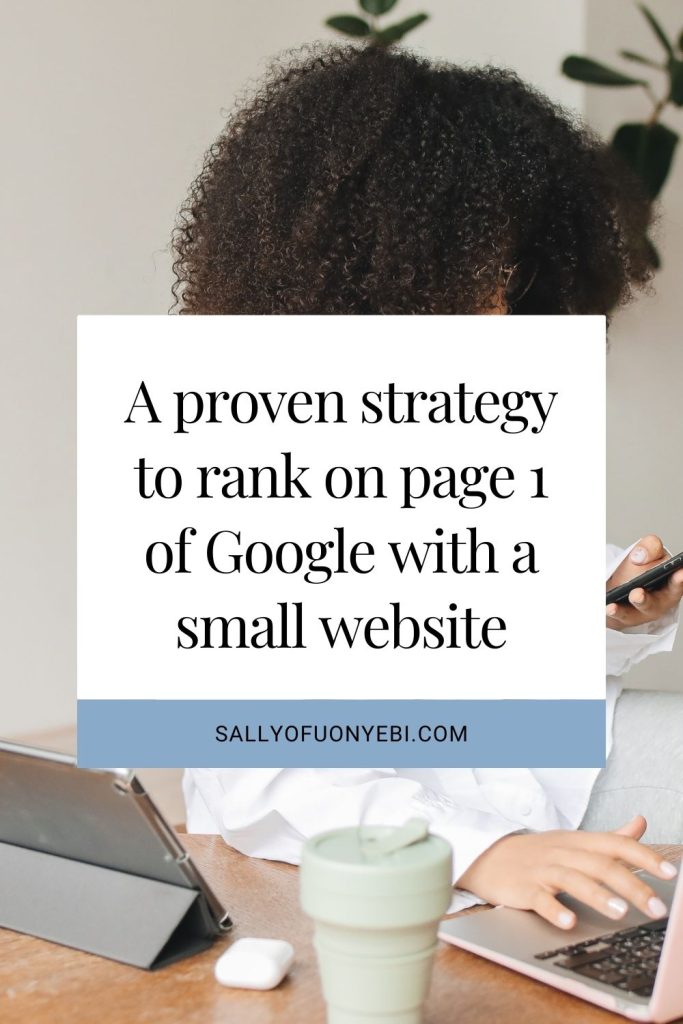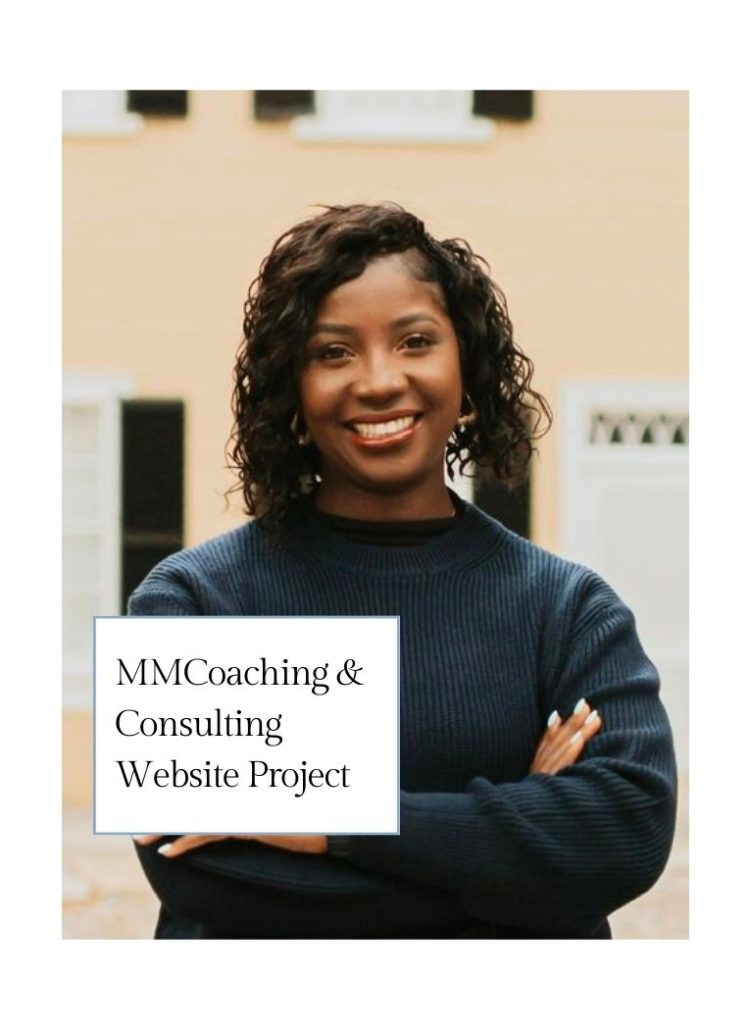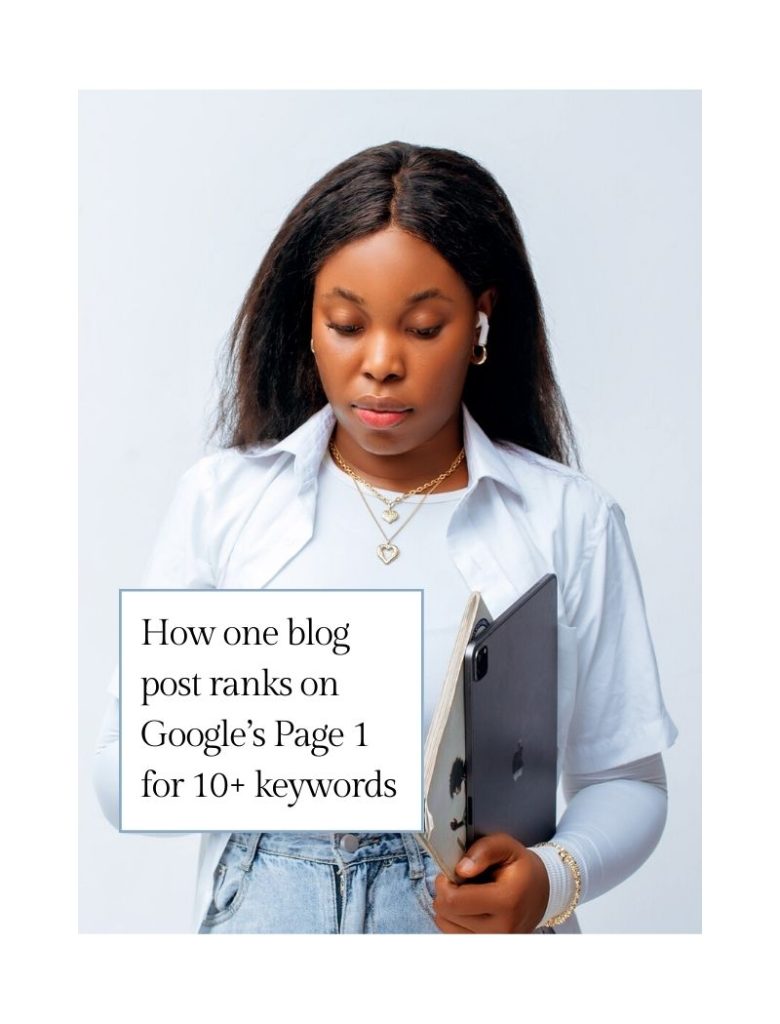
How do you get your business to the top of the search engine results page (SERP), especially if you are relatively new with barely any PR connections or thousands of dollars for paid search ads?
This case study guide will show you how.
I wrote a blog post about “launch copywriting.” It was an obvious keyword choice for me because, well, I’m a launch copywriter.
And currently? It ranks for 10+ keywords on page one of Google, even with a new website and small blog.
But that’s not all.
I get inquiries from coaches and service pros—needing launch support for their courses or programs—who find me specifically through Google Search.
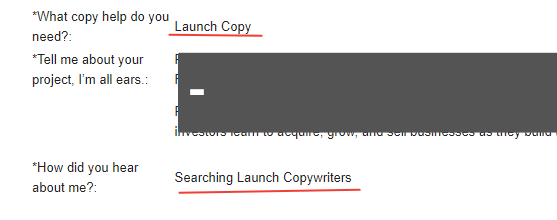
Amazing, isn’t it?
So, how did I do it?
I used a content SEO strategy that absolutely works whether you have low domain authority, zero traffic, or only 10 blog posts.
TL;DR: This method is called the topic cluster strategy. In this case study, I’m going to show you step-by-step how I did it so you, too, can adopt this strategy to improve your rankings, even if you’re not a major SEO guru or keyword research junkie.
The idea behind the post
Before I get into the “how,” let me give you a little backstory about why I wrote this post.
Apart from being a launch copywriter, obvi—, I wanted to answer a burning question my target clients constantly ask.
Whenever I scroll through Facebook groups, Instagram comments, or even Google Search results, I see creative entrepreneurs asking the same question, in different ways, over and over again.
“How do I write launch messaging that sells?”
I wanted to answer this question, but not briefly or for the sole purpose of ranking. The blog post was designed to be an “everything you need to know about launch copywriting” guide—and it is one damn detailed post, if I do say so myself.
Before worrying about “topping the SERP,” though, ensure you’re sharing relevant information. That’s the key. You don’t want to rank in vain. From your rankings, you want to be able to get traffic, leads, and clients.
Now, to the question(s) lingering in your mind:
How does a single blog post from a low DA (domain authority) website rank for more than 10 keywords on page 1? What is this topic cluster strategy thing?
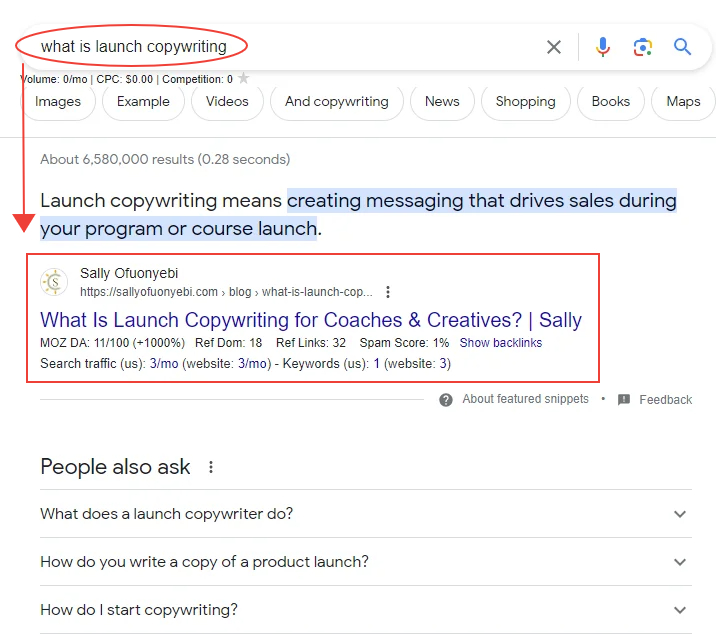
Post ranking in position 0 AKA the featured snippet).
- What is launch copywriting (Position #0)
- Launch copywriter for coaches (Position #2)
- What is a launch copywriter (Position #3)
- Launch copywriting for coaches (Position #3)
- Launch copywriting for creatives (Position #4)
- Launch copywriter for creatives (Position #4)
- Launch copywriting (Position #4)
- Launch copywriter (position #4)
- Launch copywriting for course creators (Position #5)
- Launch copywriter for course creators (Position #6)
Now, let’s get to the tea.
As I said earlier, I use a topic cluster approach to content writing. It’s one of the most effective ways to rank your posts on the SERP without burying yourself in intensive keyword research and the headaches that come with it.
The Topic Cluster Content Strategy
What is that even?
A topic cluster content strategy refers to the act of creating several (like a cluster) blog posts around a singular topic.

Basically, your pillar post is surrounded by a cluster of related content. From the diagram above, the blue circle is the main pillar post. But the yellow squares are still pillars in their own capacity.
Your pillar post should give a thorough explanation of your main topic and link to other short-form posts that explain some terms even further. And there’s no limit to the number of posts that can be in your cluster pack. It can be anywhere from 6 posts to as many as 30 posts. Mine links out to about 9 different pages that provide related insights or offers.
So, why does TCCS work, you say?
When you create clusters of content around a particular topic, it signals to search bots that you know the topic very well. So, these bots rate you as an expert, and when anyone searches for anything related to it, they rank you among the top pages on the SERP.
Apart from this reason, there are other reasons why this post ranks successfully—and I dare say pretty easily.
1. It’s an in-depth guide
Humans appreciate details, and so do search engines. This blog post includes five H2 subheadings, and four of them can be standalone cluster content if I want.
I’m saying this to tell you that I covered a lot. And “covering a lot” doesn’t always have to be about the word count. You don’t have to write a 5,000-word post before you are thorough. This post, for instance, is less than 1,700 words, and it IS comprehensive.
Whether you’re a new business owner or one who is already established, the blog post caters to your needs about writing copy for your launch.
In my ideal client’s eyes, I’m providing relevant and helpful content—for free. And in the eyes of search bots, my readers love the content since they spend quite some time on the post. So, they rank my post to help more people find this helpful content.
2. I used relevant keywords—naturally
I know I talked about “how it’s possible to rank even if you’re not a major keyword research expert”—and I mean it. Because when you create clusters of blog posts around a topic, you are telling Google you know your stuff.
But keyword research is still vital, no matter how shallow. It guides you to create content that addresses the queries your ideal clients are searching for. And this gives you the edge to rank every time they pop any of these queries in Google’s search bar.
For my post, I did keyword research to find questions my ideal clients are asking, extracted the long-tail keywords with low difficulty, and used them in my post.
3. I wrote the post for my audience, not search bots
Most people think SEO for business is just about ranking. But the truth is—
It’s not.
So much goes into search engine optimization. Stuffing keywords into your post simply because you want it to rank will (1.) put off your audience and (2.) land you a Google penalty.
Everything about my post is about making launch copywriting easy for small business owners. The content of the post is clear, understandable, and relatable. This is why it has received lots of love and shares from coaches and creatives like you.
And the more shares your content receives, the more relevant search bots believe it is—and so, the higher your rankings.
4. On-page & content SEO is spot-on
I put effort into having a good on-page and content SEO score. I used to be an SEO content writer for SaaS brands—for years. So, making sure my SEO score is kind of second nature already.
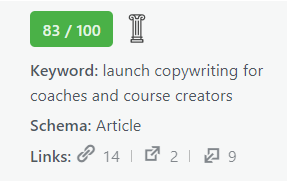
I like to use a combo of two WordPress plugins: Coschedule Headline Studio (to analyze my headlines) and RankMath (for everything else).
Here are some of the steps I took to ensure that my on-page and content SEO clicked for this blog post:
- Post formatting: The article is well formatted in hierarchical order—H1 > H2 > H3 > H4.
- Simple paragraphing: I like to keep my paragraphs between one and three lines long. Maximum of five. I want to keep my readers engaged, and that means breaking up walls of text.
- Metadata: I optimized the title tag and meta description for this post by plugging in my target keyword. My URL isn’t left out.
- Keyword optimization (not stuffing): I added my target term, relevant long-tail keywords, and other related terms in the headings and body of my blog post.
- Smooth navigation: I’d always hype up my website design template because, even though it’s $99, it absolutely compliments my copy and blog posts—and makes my content such an easy choice for my readers.
Overall, I usually aim for an SEO score of 70 on Rankmath, but I never force it if it’s not up to this number.
5. I linked to other related blog posts
Where there isn’t enough detail about a term or process, I make sure to link to another post that explains the point better.
After all, the SEO power you gain from the topic-cluster content strategy comes from internal linking. That is, your pillar post points to the other cluster content, and vice versa.
Linking to other blog posts on my website tells Google that I’m an expert on the subject matter of launch copywriting. This allows search bots to rank and show more of my content to people looking for help with launching and copywriting.
You, too, can rank on page 1 of Google with a small website.
Contrary to popular opinion, your small website can rank.
And no, you don’t need to publish 50 posts a month or chase after every PR manager who offers a discount online.
You can do it with a few strategic posts using this topic-cluster content strategy. And if you stay consistent with it, you’ll start seeing results in as little as 3–6 months.
If you want to launch your business website with SEO copy that ranks and converts site guests, grab this playbook and thank me later.
Or, if you need help mapping out a personalized content strategy for your brand, book this 90-minute session, and let’s get you all set up.
